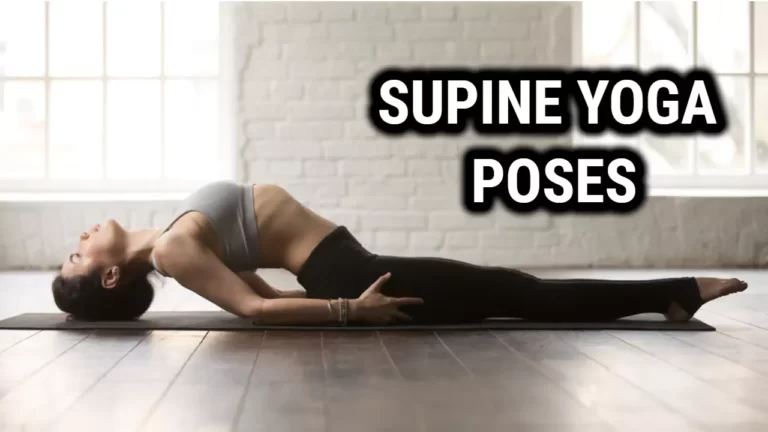Root (Muladhara) Chakra Yoga Poses

Root Chakra, also known as Muladhara, is the first of the seven chakras in the body. It is located at the base of the spine and is responsible for the sense of safety and security in an individual. When this chakra is balanced, it helps in grounding the body, providing stability, and promoting feelings of security.
Yoga is an ancient practice that helps in balancing the chakras in the body. Root Chakra Yoga Poses are specifically designed to activate and stimulate the Muladhara chakra. These yoga poses help in grounding the body, releasing tension, and promoting a sense of stability and security. Practicing these poses regularly can help in balancing the Root Chakra and promoting overall well-being.
In this article, we will discuss some of the best Root Chakra Yoga Poses that can help in activating and stimulating the Muladhara chakra. These poses are suitable for practitioners of all levels and can be easily incorporated into your daily yoga practice. By practicing these poses, you can promote feelings of safety, security, and stability in your life.
What is Root (Muladhara) Chakra?
The Root Chakra, also known as Muladhara Chakra, is the first of the seven chakras in the human body. It is located at the base of the spine, between the anus and the genitals. The word Muladhara is derived from two Sanskrit words, “Mula” meaning root and “Adhara” meaning support or base. This chakra is associated with the earth element and is often symbolized by a red lotus with four petals.
The Root Chakra is considered the foundation of the physical body, and it is associated with the feeling of being grounded and connected to the earth. It is said that when this chakra is balanced, one feels a sense of stability, security, and safety in their life. On the other hand, if this chakra is blocked or imbalanced, it can lead to feelings of anxiety, fear, and insecurity.
The Root Chakra is also associated with our basic survival needs such as food, water, shelter, and safety. It is believed that when these needs are met, we feel grounded and secure, and we are better able to cope with the challenges of life. The Root Chakra is also linked to our sense of belonging, family, and community. When this chakra is balanced, we feel a strong connection to our family and community, and we are able to form healthy relationships with others.
Benefits of Balancing Root Chakra
The root chakra, also known as the Muladhara chakra, is located at the base of the spine and is associated with our sense of grounding, stability, and survival. When the root chakra is balanced, it creates a solid foundation that allows us to open up and balance the chakras above it. Here are some of the benefits of balancing the root chakra:
- Increased sense of security: Balancing the root chakra helps us feel more grounded and secure in our physical bodies and environment. This can lead to a greater sense of safety and stability in our lives.
- Improved physical health: The root chakra is associated with our basic needs for survival, such as food, water, and shelter. When this chakra is balanced, it can help improve our overall physical health and well-being.
- Greater emotional stability: Balancing the root chakra can help us feel more emotionally stable and centered. It can also help us overcome feelings of fear, anxiety, and insecurity.
- Increased self-confidence: A balanced root chakra can help us feel more confident in ourselves and our abilities. This can lead to greater self-esteem and self-worth.
Overall, balancing the root chakra is an important step towards creating a strong foundation for our physical, emotional, and spiritual well-being. By practicing yoga poses and meditation techniques that focus on the root chakra, we can help bring balance and harmony to this important energy center.
Yoga Poses for Root Chakra
The Root Chakra, also known as Muladhara Chakra, is associated with the element of earth and is located at the base of the spine. When this chakra is balanced, we feel grounded, safe, and secure. Yoga poses that help to open and align Muladhara are essential for those who feel disconnected from their physical body or struggle with anxiety.
Here are some yoga asanas that can help to balance the Root Chakra:
| Yoga Pose | Description |
|---|---|
| Pavanamuktasana | A reclining pose where one leg is hugged into the chest while the other leg remains extended on the floor. This pose helps to release tension in the lower back and hips. |
| Janu Sirsansana | A seated forward bend where one leg is extended while the other leg is bent with the sole of the foot against the inner thigh. This pose helps to stretch the hamstrings, lower back, and hips. |
| Padmasana | A seated pose where both legs are crossed with the feet resting on the opposite thighs. This pose helps to improve posture and increase flexibility in the hips and knees. |
| Malasana | A squatting pose where the feet are hip-width apart and the hips are lowered towards the floor. This pose helps to stretch the hips, groin, and lower back. |
These yoga poses can be practiced individually or as part of a sequence. It’s important to listen to your body and only go as far as feels comfortable. Remember to breathe deeply and stay present in the moment.
1. Mountain Pose (Tadasana)
Mountain Pose, also known as Tadasana, is a foundational yoga pose that is often used as a transition pose between other standing poses. It is a simple pose that is easy to perform, making it perfect for beginners.
The pose is named after a mountain, which is a symbol of stability and strength. In this pose, you stand tall with your feet hip-width apart, your arms at your sides, and your gaze forward. By grounding your feet and engaging your core, you can improve your posture and find a sense of stability.
Mountain Pose is also a great pose for balancing the Root (Muladhara) Chakra, which is located at the base of the spine. This chakra is associated with feelings of safety, security, and grounding. By practicing Mountain Pose, you can help bring your Root Chakra back into balance.
| Steps to Perform Mountain Pose: |
|---|
| 1. Stand with your feet hip-width apart and your arms at your sides. |
| 2. Ground your feet into the mat and engage your leg muscles. |
| 3. Lengthen your spine and lift the crown of your head towards the ceiling. |
| 4. Roll your shoulders back and down, opening your chest. |
| 5. Relax your face and breathe deeply. |
By practicing Mountain Pose regularly, you can improve your posture, increase your sense of stability and grounding, and balance your Root Chakra. It is a simple yet powerful pose that can have a profound impact on your overall well-being.
2. Garland Pose (Malasana)
Garland Pose, also known as Malasana, is a yoga pose that focuses on the Root Chakra. This pose is a deep squat that has many benefits, including improving digestion, strengthening the pelvic floor, and stretching the hips and groin. It is also a great pose for pregnant women, as it can help prepare the body for childbirth.
To get into Garland Pose, start in Tadasana (Mountain Pose) with your feet and legs together. Spread the soles and toes of both feet. Keep your legs parallel while bending your knees and pressing your heels into the floor, maintaining even weight on both feet. Once your knees are completely bent, spread them and move your chest forward between your thighs. You can bring your hands to your heart in prayer position or extend them out in front of you.
Garland Pose can be challenging for those with tight hips or knee problems. If you have knee issues, you can place a blanket or block under your heels for support. You can also use a strap to help bring your feet closer together if you have difficulty keeping them parallel.
Regular practice of Garland Pose can help improve your overall yoga practice by increasing flexibility, balance, and concentration. It is a great pose to incorporate into your daily routine, especially if you spend a lot of time sitting or standing throughout the day.
3. Warrior Pose (Virabhadrasana)
Warrior Pose (Virabhadrasana) is a powerful standing pose that helps to activate the Root (Muladhara) chakra, which is located at the base of the spine. This pose strengthens the legs, hips, and core, while also improving balance, focus, and concentration.
To practice Warrior Pose, begin in Tadasana (Mountain Pose) at the top of your mat. Step your left foot back about 3-4 feet and turn it out at a 45-degree angle. Bend your right knee so that it is directly above your ankle, with your thigh parallel to the floor. Keep your left leg straight and strong, with your toes pointing forward.
As you inhale, lift your arms up overhead, with your palms facing each other. Gaze forward and hold the pose for 5-10 breaths, then release and repeat on the other side.
Warrior Pose can be modified in several ways to make it more accessible or challenging, depending on your level of experience. You can use a block under your bottom hand for support, or you can lift your back heel off the ground for a deeper stretch. You can also add a twist by bringing your opposite elbow to your knee, or you can move into Warrior III by extending your arms and lifting your back leg off the ground.
Overall, Warrior Pose is a great way to connect with the energy and power of the Root (Muladhara) chakra, while also building strength and stability in the body. It is a foundational pose in many yoga sequences and can be practiced regularly to improve your overall health and well-being.
4. Child’s Pose (Balasana)
Child’s Pose, or Balasana in Sanskrit, is a gentle forward fold that is often used as a counter pose to backbends. This pose is a great way to calm the mind and body, and it is a nice way to gently stretch various parts of your body. It is also a chance to stop what you are doing, reassess your position, reconnect with your breath, and prepare yourself to move forward.
To perform Child’s Pose, start on your hands and knees. Bring your big toes together and spread your knees apart. Sit back on your heels and fold forward, resting your forehead on the ground. You can keep your arms extended in front of you or bring them back alongside your body with your palms facing up. Take deep breaths and stay in the pose for several minutes, allowing your body to release deeply.
Child’s Pose is a grounding pose that can help relieve stress and fatigue. It also gently stretches the low back, massages and tones the abdominal organs, and stimulates digestion and elimination. This pose is especially beneficial for those who spend a lot of time sitting or standing, or for those who experience back and neck pain or muscular tension.
For more comfort, you can place a blanket or pillow under your knees or ankles. You can also use a yoga block or bolster to support your forehead or chest. If you have knee or ankle injuries, you can modify the pose by placing a rolled-up towel or blanket under your knees or ankles, or by widening your knees to reduce the pressure on your joints.
Also Read: Somatic Yoga Poses: Mind-Body Connection through Movement
5. Bridge Pose (Setu Bandhasana)
Bridge Pose, or Setu Bandhasana, is a great yoga pose for balancing and opening the Root Chakra. It can also help to stretch the chest, neck, and spine while strengthening the glutes, hamstrings, and core muscles.
To practice Bridge Pose, follow these steps:
- Lie flat on your back with your knees bent and feet hip-width apart.
- Place your arms by your sides with your palms facing down.
- Press your feet and arms into the ground and lift your hips up towards the ceiling.
- Hold the pose for several breaths, then slowly lower your hips back down to the ground.
Some variations of Bridge Pose include:
| Variation | Description |
|---|---|
| Supported Bridge Pose | Place a block or bolster under your sacrum for added support. |
| One-Legged Bridge Pose | Lift one leg up towards the ceiling while holding the pose. |
| Wheel Pose | Place your hands by your ears and press up into a full backbend. |
Bridge Pose is a great pose for beginners and can be practiced daily to help balance the Root Chakra and improve overall flexibility and strength.
Meditation Techniques
Meditation is an ancient practice that has been used for centuries to bring about inner peace and clarity. There are many different meditation techniques, but one of the most powerful is Muladhara meditation. This type of meditation focuses on the root chakra, located at the base of the spine. It helps to release stagnant energy, allowing us to become more grounded and connected with our physical body.
Here are three key benefits of practicing Muladhara Meditation:
- Improved physical health
- Enhanced mental clarity
- Increased emotional balance
Muladhara meditation can be done through yoga postures or seated poses like lotus pose or child’s pose. In addition, it can also be done through visualization and chanting mantras associated with the root chakra. Practicing this type of meditation will allow you to develop a greater connection with your inner self and will help you to cultivate a sense of grounding and stability in your life.
No matter which type of meditation technique you choose, regular practice will lead you on a journey towards true inner awareness and contentment. Start today by taking some time out for yourself and exploring the world within – your own personal source of peace, joy and wisdom.
Mantras And Affirmations
In addition to yoga poses, other techniques such as mantras and affirmations can also be used to open and balance the root chakra. Chakra mantras are repeating a phrase or sound that corresponds with each chakra’s energy. For instance, “Lam” is commonly used for the root chakra to bring about feelings of stability and security. Affirmations are positive statements that focus on releasing old patterns or beliefs and creating new ones which support our desired outcome. Examples could include “I am safe” or “I trust in my ability to take care of myself” while focusing on connecting with one’s root chakra during yoga practice.
The combination of mantra repetition and affirmations creates a powerful tool for opening up the root chakra and cultivating feelings of safety and security in life. Utilizing both of these powerful practices together allows us to tap into an even deeper level than just practicing yoga poses alone, providing an opportunity for deep connection with our true selves on all levels – mental, physical, spiritual, and emotional.
Related Read: Manipura Yoga Poses: Strengthening Your Solar Plexus Chakra
Conclusion
The Root (Muladhara) Chakra is the foundation of our physical and emotional well-being. It is responsible for our sense of safety, security, and groundedness. Practicing yoga poses that focus on the Root Chakra can help us connect with our instincts and improve our overall confidence.
Incorporating Root Chakra yoga poses into your daily practice can help balance the energy flow in your body, leading to a more grounded and stable state of being. These poses can also help alleviate feelings of anxiety, depression, and stress.
Some of the best Root Chakra yoga poses include the Mountain Pose (Tadasana), Tree Pose (Vrksasana), Warrior I (Virabhadrasana I), and Child’s Pose (Balasana). These poses help to strengthen the pelvic floor, legs, and feet, while also promoting a sense of stability and grounding.
Remember, it’s important to listen to your body and practice yoga poses that feel comfortable and safe for you. With regular practice, Root Chakra yoga poses can help you connect with your inner self and find a sense of balance and harmony in your life.






